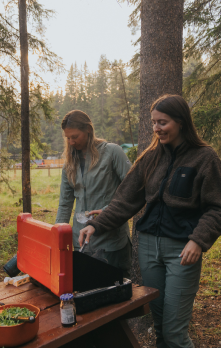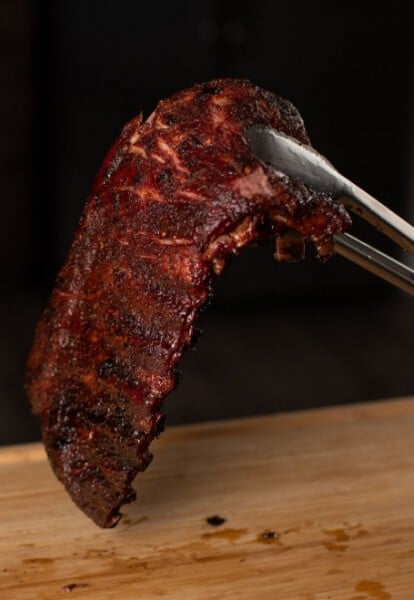
THE BOOK OF RIBS
When someone says "barbeque" you think ribs-it's unavoidable. We're talking sweet dreams of firing up the grill, loading up on napkins, slappin' some on ma's homemade BBQ sauce, and sinking your teeth in rip-roaring rib-dom. Whether it's your first-time cooking ribs or you're a seasoned rib-a-tier you might be surprised what new tips and tricks you'll learn from the Camp Chef Book of Ribs. Now, without further adu, from our quiet cal-de-sac to yours...
Chapter Links
ANATOMY
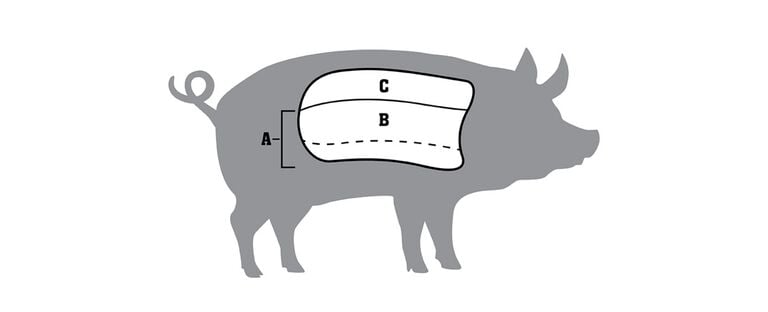
What cut of rib is the best
There are several types of pork ribs, however, you'll likely only run into Baby Back, St. Louis, and Spare Ribs. These are typically the most popular on the market.
A) SPARE RIBS
(Also include St. Louis Cut within them.) Spare Ribs are found farther down on the side of the pig near the breast bone. Spare Ribs are notorious for housing more meat between the bones and less on top the bones. A lot of rib fanatics will argue that Spare Ribs are more flavorful due to the increase in marbling.
B) ST. LOUIS CUT
St. Louis Cut ribs are technically Spare Ribs with the rib tips removed. The term rib tips refers to the extra piece of meat that contains cartilage and connective tissues. So, you'll find that St. Louis Spare Ribs are flatter and more squared-off than Baby Backs or regular Spare Ribs. While this cut offers a lot of meat, there also happens to be more bones.
C) BABY BACK
Baby Back Ribs are by far the most popular in the U.S. Contrary to popular belief, they do not come from 'baby pigs.' In fact, the age of the animal has little to nothing to do with the naming but rather where the slab of meat is located on the backbone. Baby Back Ribs are located high up on the hog's backbone, surrounded by connective tissues. You'll find that Baby Back Ribs tend to be shorter, more tender, and considerably leaner than Spare Ribs.
Buying Process: Deciding which type of ribs to cook is completely up to you and we'd be much more comfortable having you try all three before listening to some glorified rib competition winner from the 1980s. Typically St. Louis and Spare Ribs are cheaper than Baby Back Ribs. So, have a little fun with it-gather friends or family and try a blind taste test of the three!
Rib Grading System: Unlike beef cuts, pork doesn't have a grading system, but it does matter that you get a high-quality rib rack. We recommend buying from a trusted supplier or butcher.
PREPARING

removing the membrane
Start your rib smoking prep process by rinsing the rib rack in cool water. This will clear away any bones from the butchering process. Next, many people will advise you to remove the membrane from the bottom side of the ribs as the membrane tends to be chewier. If you've got a nice butcher, they may have already removed the membrane for you. But, if not, the process is super easy:
- Dry your rib rack using a paper towel.
- Flip your rack so that it's lying bone side up.
- Insert a knife and make a slit under the membrane.
- Slide your fingers between the ribs and the membrane and begin to pull back on the first three bones.
- Grip those connected pieces with a paper towel (better traction) and begin to pull the membrane off. Don't be discouraged if it doesn't peel off in one satisfying chunk. It may take a few tries.
Pro Tip: If it's your first time, you don't need to spend 30 minutes peeling the membrane off in frustration. There is a good chunk of the rib smoking population that leaves the membrane on completely. It takes practice. (If you decide to leave the membrane on we highly suggest scoring the membrane.)
TRIMMING
Trim to your liking! (And, only if you like.) A good deal of the fat will render off during the cook, but you can always trim off any excess fat from the sides. Trimming or squaring off the ends of the racks is an optional step that can add aesthetic to the overall "end presentation" of the ribs. Depending on who you purchase the ribs from, they could have flaps of meat still attached or thing layers of fat. We suggest trimming any flap that was left behind because it will likely burn. Making the rack look uniform all the way around will ensure an even cook and optimal flavor. St. Louis and Spare ribs tend to have enough fat in the meat to allow you to trim most external fat. If you have Baby Back ribs you might be more lenient on how much fat is left on the out side. Chef Jack shared that he'd often trim his rack for professional cooking events, cook the scrap meat alongside the rib rack, then add to his baked beans side dish for extra flavor!
COOKING METHODS
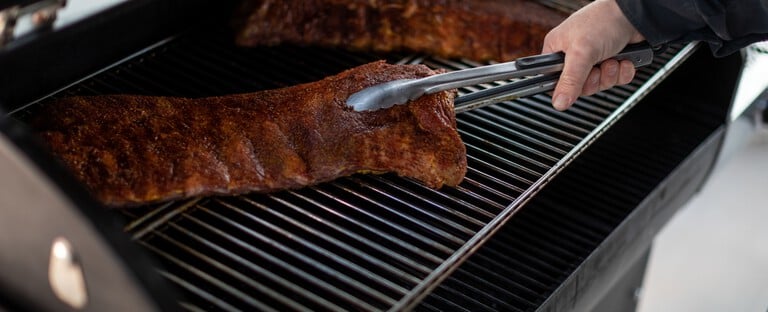
SMOKING RIBS
One of the most popular ways to cook pork ribs is on a smoker or pellet grill. Because of the meat type, your ribs have a ton of connective tissue and collagen found within. Cooking your ribs low and slow will help dissolve that tough collagen-yielding you a tender, juicy rack. Smoked ribs on the pellet grill will also subtly enhance the meat with a distinct taste of whichever hardwood flavor you choose. The most commonly agreed upon smoking temperature is around the 225°F mark (or what we would consider High Smoke.) If you are interested in a smoked rib recipe we have the perfect 321 recipe for any cut you buy. The 321 method is typically the easiest way to learn about smoking ribs. There will forever be an argument between 221, 321, 222, and many other variations but that is left up to you.
GAS OR CHARCOAL GRILL
While it'll be difficult to achieve an authentic rib, it's not impossible. And, who are we kidding-we know there are tons of grillers out there makin' it work on a gas grill. While rib purists will tell you to always go low and slow, you're still able to cook a nice rack of ribs on them. Gas grills and charcoal grills will inevitably run a little hot and depending on your grill brand, it can be extremely difficult to manage and monitor your grill's temperature. You'll likely be cooking around the 300°F mark. Because of the higher cooking temperature, this method will take the shortest. If you are looking for the most tender set of ribs, we recommend not grilling over a direct flame. If you can, try setting up a two-zone heating method on your grill. This just means that one side is producing heat, while the other side is not. You would then cook your ribs on the non-heated side through the form of convection cooking. If you want to add some extra flavor we just released a Smoke Tube! Just fill with hardwood pellets to get flavorful ribs on your gas grill! Pull off the grill when your pork ribs reach anywhere between the 190-205°F mark.
OVEN-BAKED
If you don't own a grill, then you've likely opted for cooking ribs in the oven. Be careful as your oven temperatures may fluctuate depending on age and brand, but fret not, fall-off-the-bone ribs are still achievable-you'll just have to keep an eye on them. For best results set your temperature to around the 225-275°F mark and remove when your internal temperature reaches between 190-205°F.
WOOD
Different woods burn differently and not just any variety hardwood will do for ribs. If you're looking for a classic bold flavor we recommend a Mesquite or Oak pellet base. If you're looking for something on the sweeter side try a Cherry or Apple. And if you're unsure about which hardwood pellets to commit to, the Competition Blend is a safe route.
In our Pro series pellet grills and smokers you can use hardwood chips or chunks. The Woodwind Pro and XXL Pro have our new technology which give significantly more smoke flavor rivaling that of an offset stick smoker. The chips and chunks burn slightly "dirtier". This is where the majority of the flavor comes from. Pellet grills are amazing at flavor and convenience but critics will say they don't provide enough smoke flavor. If you are considering what wood to use and have the capability of picking up a Pro series pellet grill or vertical smoker, the wood you put in the smoke box will determine the ending flavor.
SEASONINGS + SAUCES
What are the best sauces or seasoning for ribs? We have our favorites but that is a very personal questions. You can get a different flavor and texture from doing wet or dry ribs. You have a wide range of freedom because you can decide if you want to baste, spray, wrap, what seasonings or rubs you use, what binders you use etc. To help a little here are our suggestions.
WET RIBS VS. DRY RIBS
One of the BBQ world's greatest debates-wet ribs or dry ribs. Dry ribs contain dry rub ingredients. While wet ribs or sticky ribs get BBQ sauce slathered on the 15 minutes to an hour. This is obviously a personal preference and will ultimately need to be taken to the plate for an accurate answer.
DRY RUBS
You can keep it simple with just salt and pepper and your ribs will taste more like pork. If you have the time, salt it the night before for a dry brine. An overnight dry brine will give you more flavor and moisture as the molecular structure changes. Otherwise, there are tons of pre-made dry rubs on the market for your ribs. Try one of our pre-made rubs and seasonings if you haven't. Far easier than experimenting on your own and we are sure they will not disappoint you.
SAUCES/BASTING
Head to any grocery store and you'll find an unlimited amount of barbeque sauces claiming to be the best. We prefer a little creativity when it comes to wet ribs. Add your sauce to your ribs using a basting brush during the final leg. (Last 15 minutes to hour.)
First Timer Tip: Never put your BBQ sauce on for the full cook time or it will burn!
BINDING AGENTS
Mustard, Mayo, butter, etc. Anything that can create separation between the salt and pepper and pork allowing us to add extra layers of flavors. Binders also protect the meat and hold moisture in.
JACK'S SPECIALTY
First, salt and pepper your ribs. Then, add a thin layer of mustard (your binder.) In a bowl, mix 1 cup of Camp Chef All-Purpose Seasoning with 1 cup of brown sugar. Sprinkle the concoction across the entire surface of your ribs.
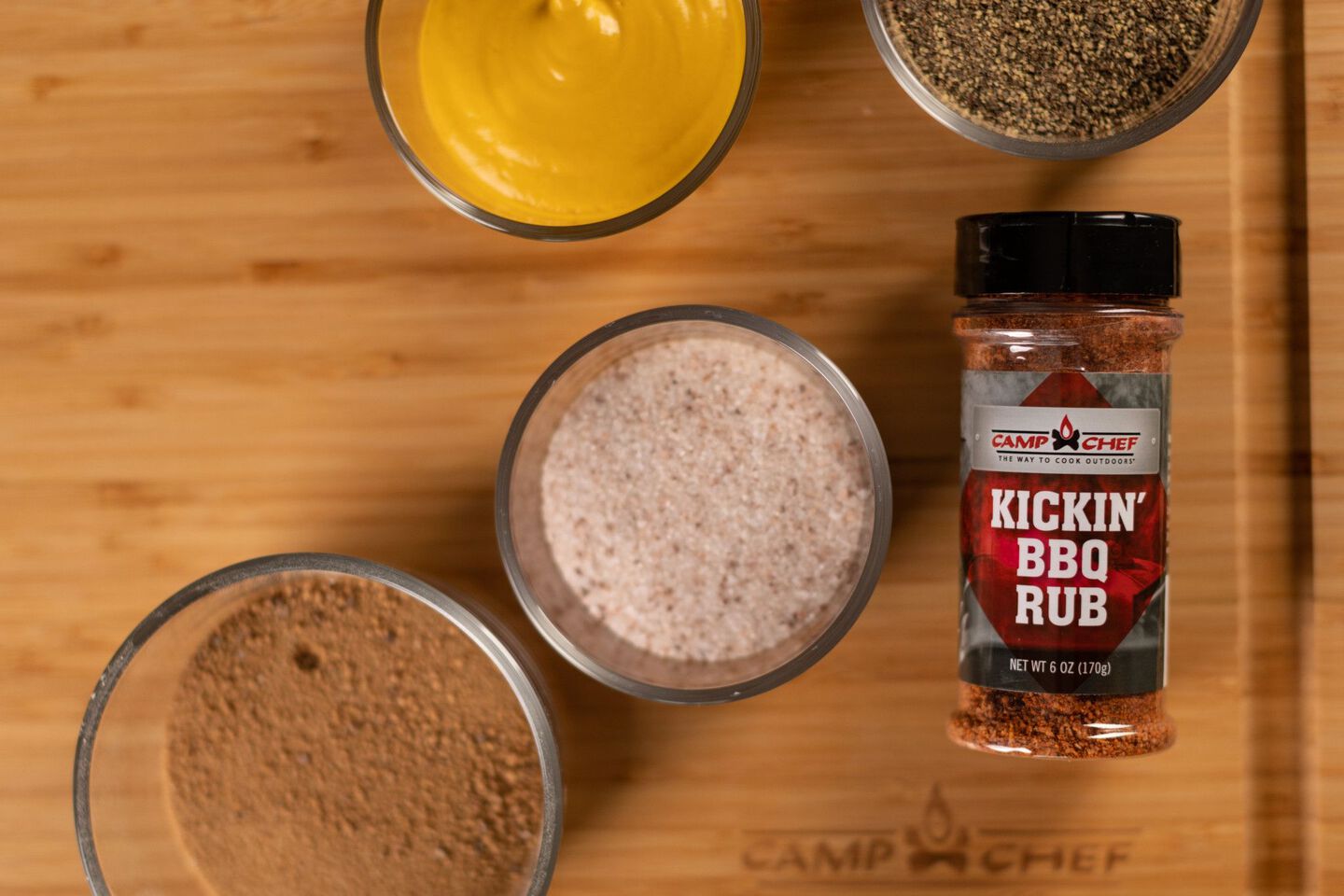
.jpg?sw=1440&sfrm=jpg)
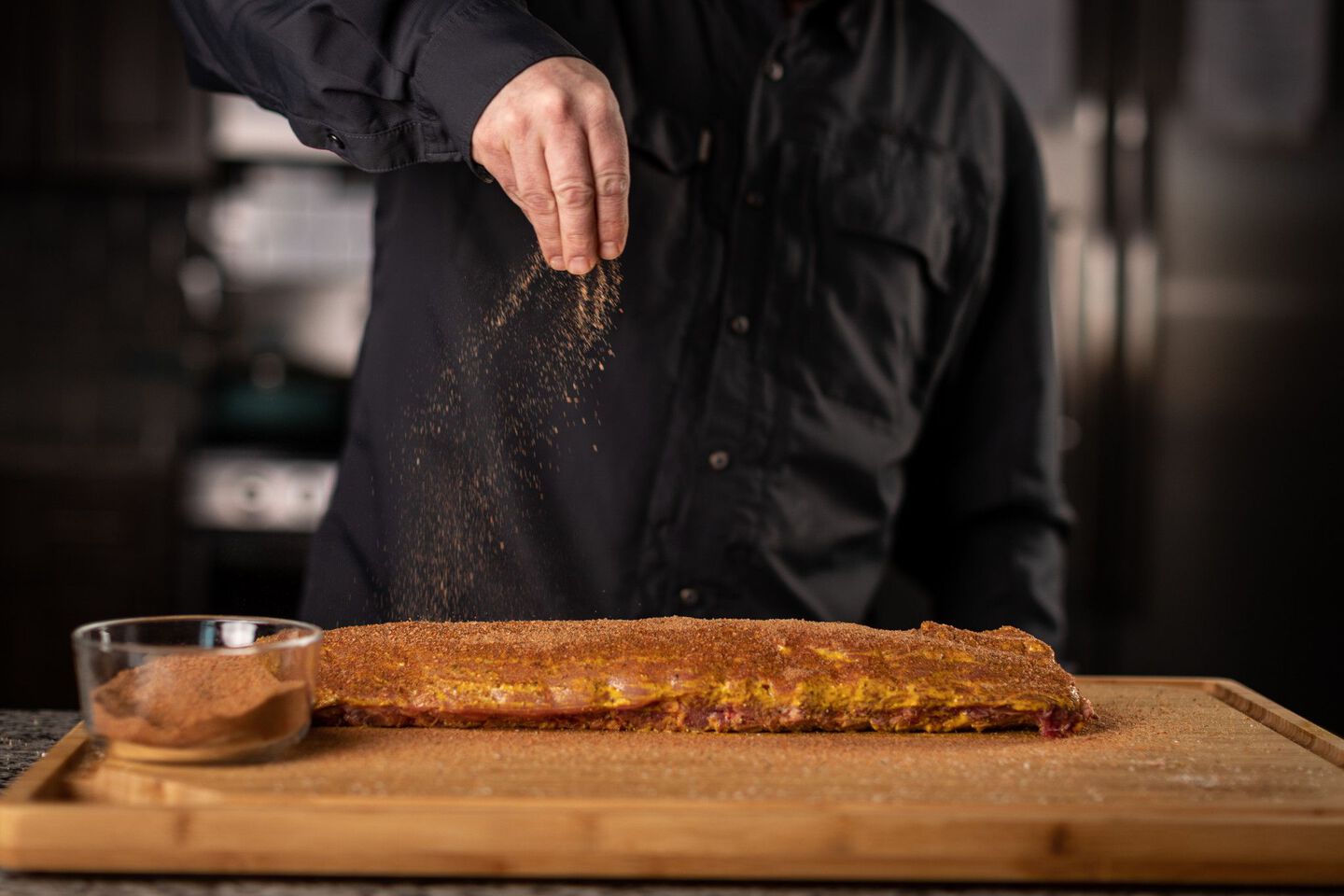
TIME + TEMP
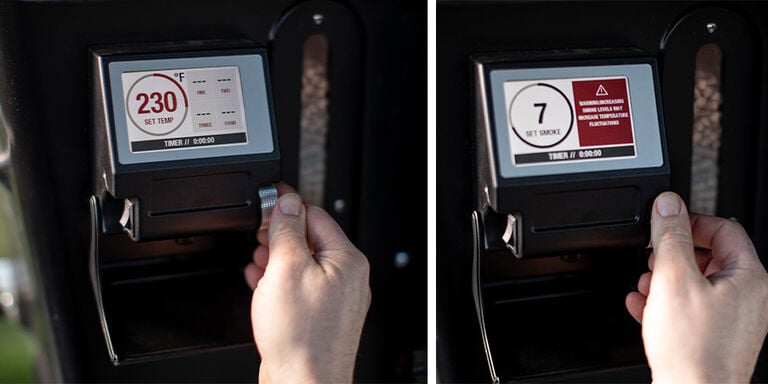
How long do ribs take
If you follow our recipe blog, you'll notice that we don't list exact cook times. We know that every piece of meat is different, and cooks differently. Depending on size, fat content, and connective tissues nothing can be exact. The general internet consensus is smoking 5-7 hours for St. Louis Cut and Spare Ribs & 4-6 hours for Baby Back Ribs at 225-275°F. (All fat content renders and cooks differently so keep in mind that thicker racks will take longer to cook.)
Pro Tip: Using our Rib Rack to save on space? Add an extra 30-45 minutes to the cook time.
For it to be safely consumed, the USDA requires all pork to be brought to a minimum internal temperature of 145°F. However, that doesn't mean we pull them off the grill right when it hits. In fact, we've got a long way to go. Some of the best ribs we've tasted have been brought up to the 205°F mark. Between the 190-205°F mark is where the magic happens. This is where the meat really gets a chance to tenderize and break down all that connective tissue we were talking about above.
Pro Tip: Avoid inserting your meat probe too close to a bone as that may skew the temperature readout.
3-2-1 vs NO WRAP
When cooking ribs, you're sucking the moisture out of the pork. Here's a couple methods to ensure you're adding in moisture.
TEXAS CRUTCH
You've likely heard of this method while reading our Book of Brisket. It's an optional step in rib smoking that involves wrapping the meat in foil and an ounce of liquid. This method can speed up the cooking process while tenderizing the meat. However, if you wrap for too long the meat might go soggy and you could lose any rub/seasoning you've put on your rack.
SPRITZING SPRAYING
Spritzing is a great way to keep dry ribs, wet. If you've been to our Pellet Grill 101 class, then you know Chef Jack loves to spray his rib racks to ensure moisture and attract more smoke. However, some rib purists advise against spraying as you're actively opening your grill every 45 minutes to an hour, interrupting the smoking process. If you choose to use this method, keep in mind that you should no longer be spritzing once/if you've slathered your barbecue sauce on. Jack's spray consists of 1-part apple cider vinegar and 1-part apple juice.
3-2-1 METHOD
This method is a guideline and you can adjust as needed. The name comes from the idea that you smoke the rib rack uncovered for 3 hours, pull it out and wrap (meat side down) for another 2 hours, then open up your grill and slather on your BBQ sauce for 1 final hour. Even though this is easy to add up to 6 hours be sure to add more time to rest. The rest is important and we will cover that a little later. The foil wrap causes a steaming effect that yields fall off the bone ribs. While, that final hour serves as a way to tightening things back up. Many opt-out of the 3-2-1 method because it's time-consuming and more work. Wanna' try it out? Here's our 3-2-1 Recipe.
.jpg?sw=1440&sfrm=jpg)
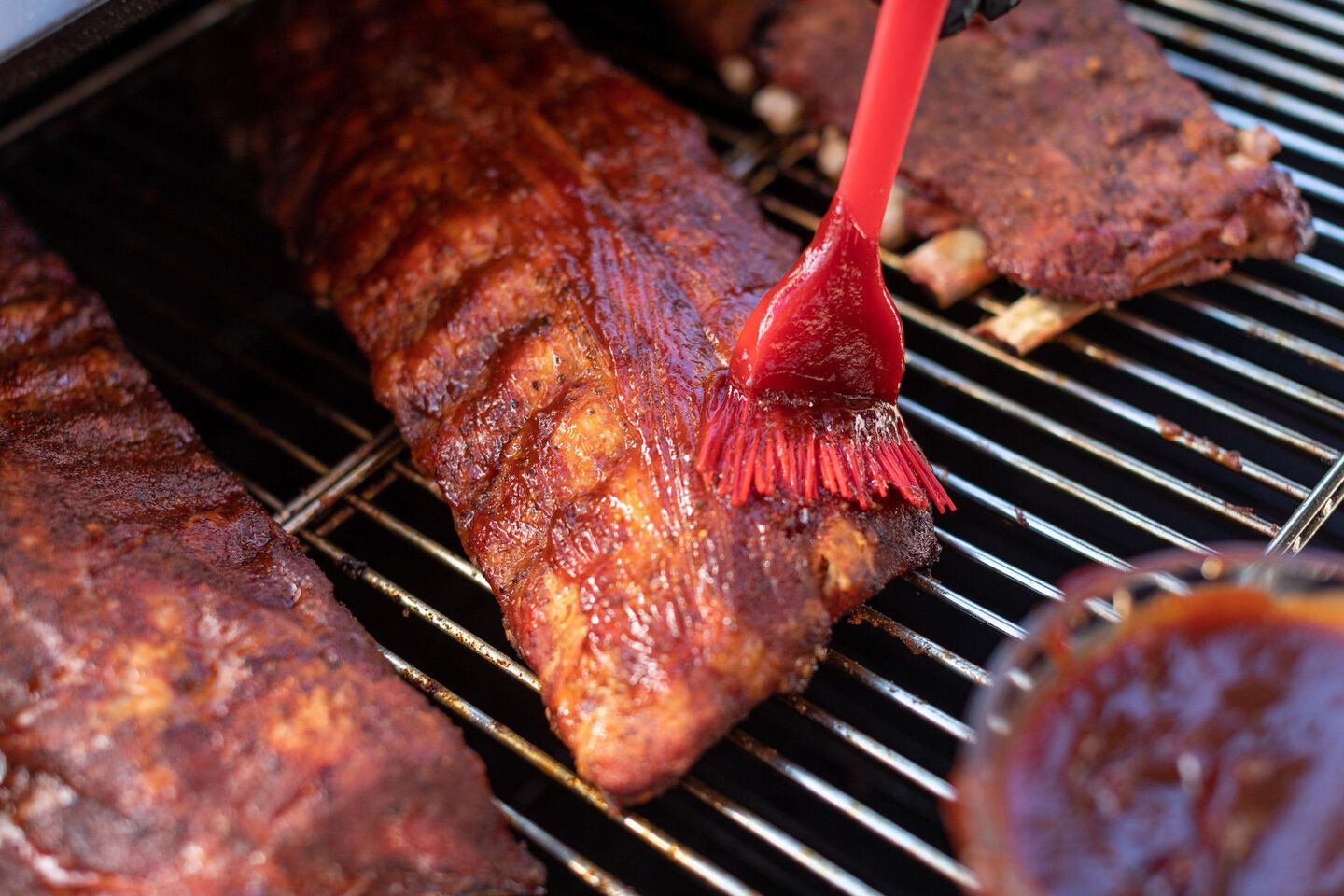
.jpg?sw=1440&sfrm=jpg)
TEST
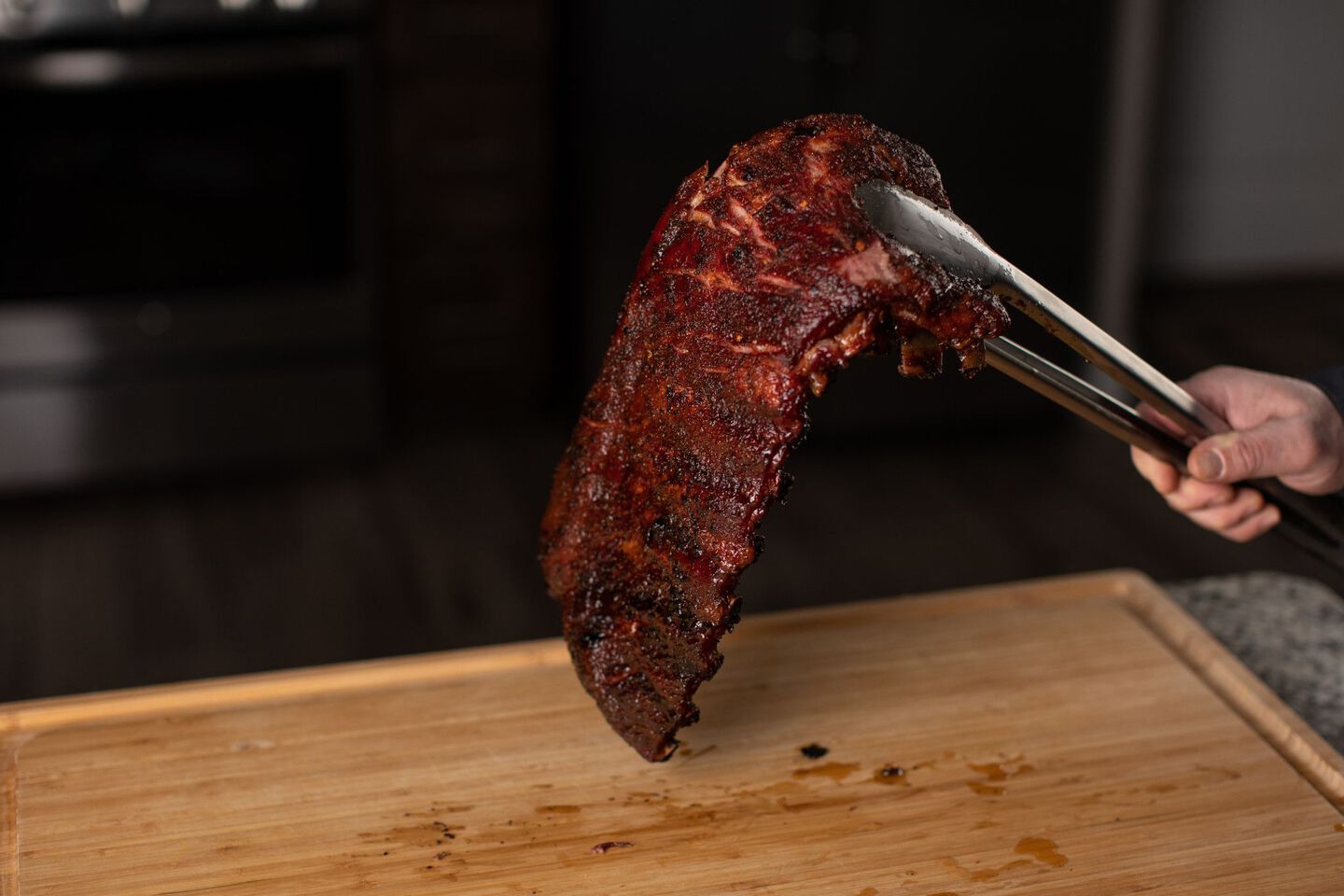
Outside of monitoring the internal temperature, the bend test is an easy way to tell if your ribs are done. Using a pair of kitchen tongs, pick up the slab of ribs and lightly (and carefully) bounce them in midair. Telltales if the meat is ready: the ribs will bow and form a curved shape & the surface of the meat will begin to crack and almost feel as though it's going to break. AND WARNING! Your ribs might actually break, so do this over a safe surface like a cutting board or serving tray.
RESTING / HOLDING
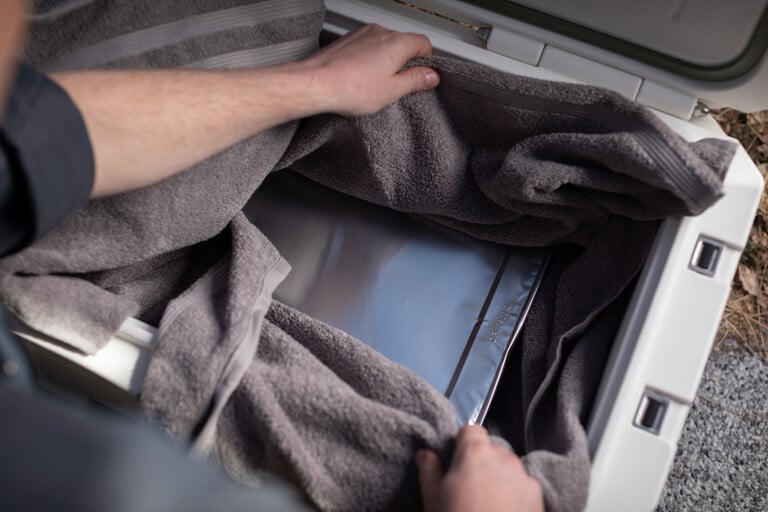
Do I need to rest my ribs
Oh honey, yes. Rest them for about 10-15 minutes wrapped at a minimum. Need to hold 'em for a few hours? No problem! Create a faux Cambro with a large cooler and some towels for extra insulation-your rib's heat can hold for several hours when properly stored.

SLICING
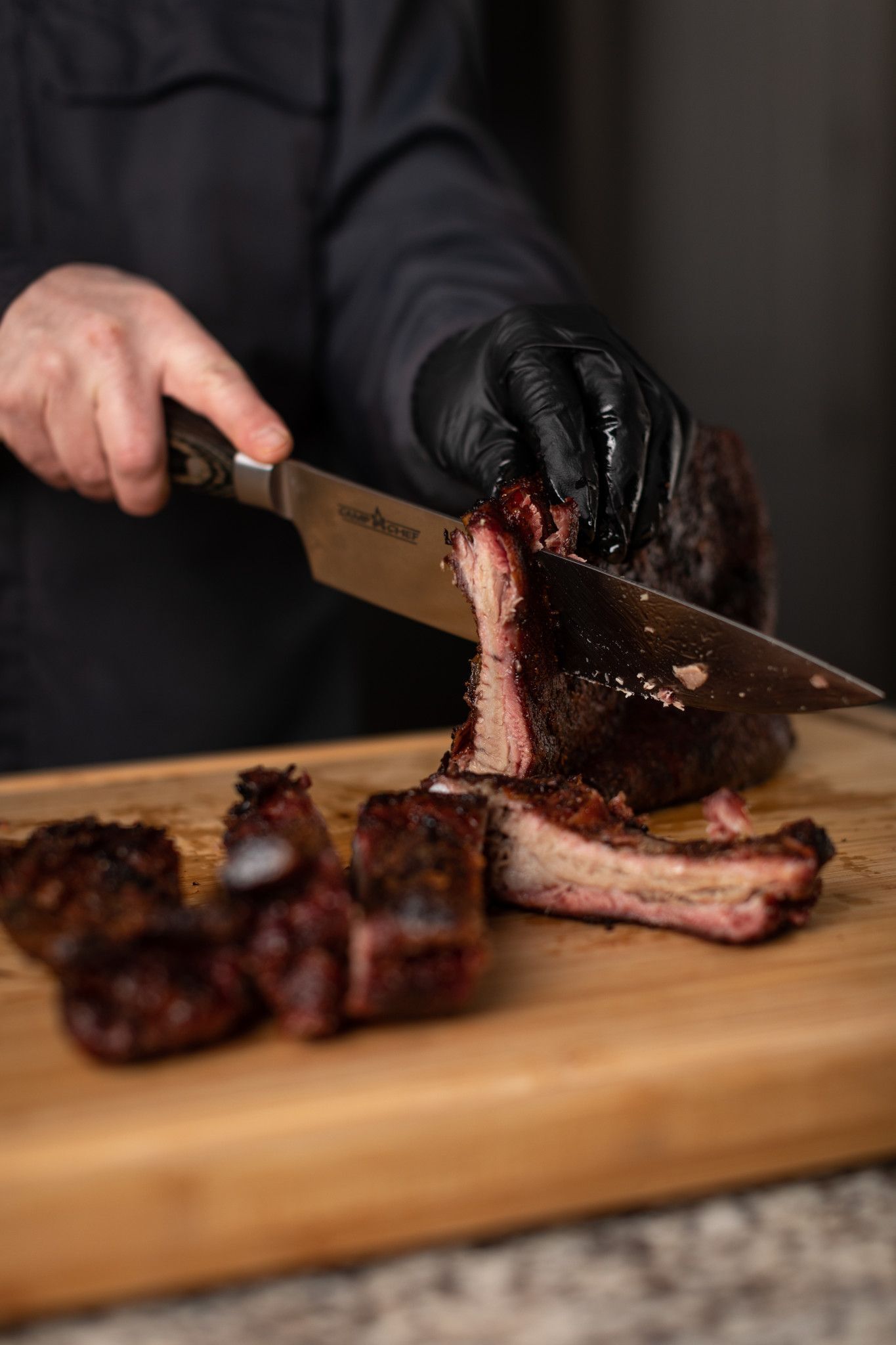
Hold the rib rack up on its side so you have a visual of where your rib bones are. Carefully slice between bones with a sharp knife. Use our 4-Piece Carving Set for best results!
Serving
Serve with a side of BBQ sauce...or none at all. But definitely with mac and cheese, coleslaw, or beans (remember those square tips from the Trimming section above? Add them to your beans mixture for a flavor blast from a whole other cul-de-sac!)
A CAMP CHEF RIB RACK
Camp Chef has a variety of products that help make rib cooking seamless. Pick up the 26-inch Bamboo Cutting Board for a large surface great for trimming, seasoning, and slicing your ribs. All of our pellet grills have the capacity to smoke a rib-even the Pursuit!
A Camp Chef-style rib means more than just using our products-it also provides a sense of community. If you're on Facebook and have a Camp Chef pellet grill, join this customer-ran pellet grill group called Camp Chef Smoker Smokers.










